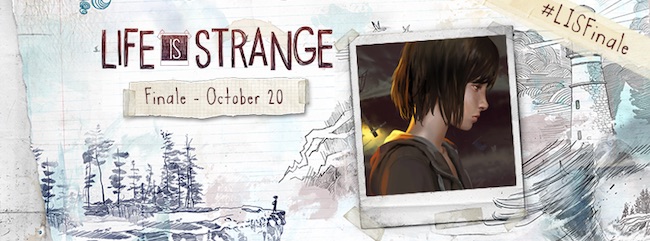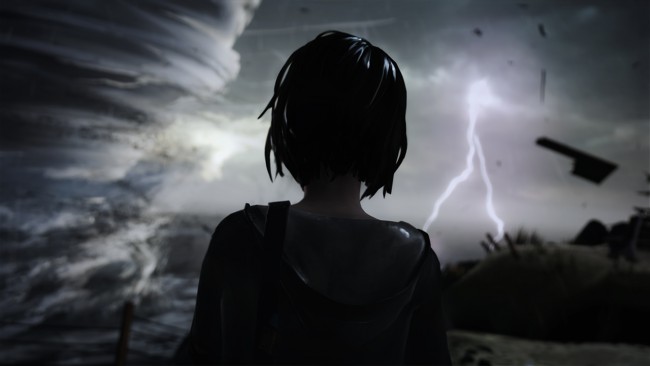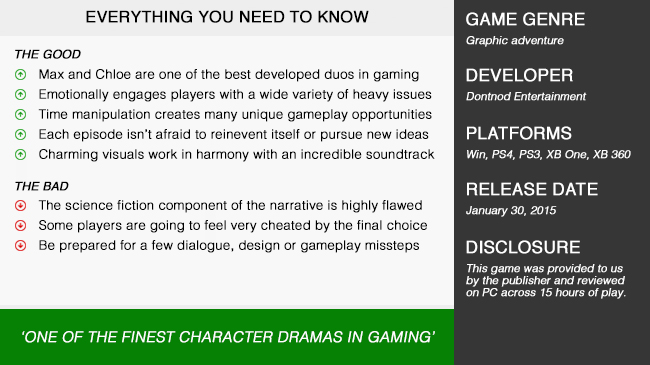
As a reviewer, it’s not often I get to spend as much time with one game as I do when covering an episodic series. With 6-8 week gaps between instalments, it’s big commitment, but also a great opportunity as it gives you a lot of time to consider what you’ve played and invest heavily in the characters and world. I’m feeling a little empty right now that it’s all come to a close, but it’s also exciting to finally bring my thoughts together to give you my final verdict on Life is Strange as a whole. Before I even get going, however, let me first warn all potential readers that this is not a stand-alone review. I’m going deep into spoiler territory for episodes 1-4, so skip to the bottom if you only want a final word.

Reflecting back on episode one, my initial impressions for Life is Strange were mostly positive. For one, I appreciated seeing a relatable, everyday teen female protagonist taking the spotlight; even if the set up was heavily fueled by film clichés. I mean, who amoung us wouldn’t jump at a chance to have do-overs during high school? The game perfectly captures the cheesy fun of a teen comedy-drama but with a unique interactive twist. The ability to ‘savescum’ with the pull of a trigger is something Walking Dead fans could have only dreamed of, but it isn’t all about supernatural mischief (much to Chloe’s dismay). Events take a dark turn quickly, and there are long-term consequences for you to consider.
At its core, the game revolves around Max’s friendship with Chloe; whose shooting in episode one manifested Max’s time-travel abilities. On the surface, Chloe appears to be a typical rebellious teenager who blames the world for all her problems. But that’s the thing about Life is Strange; nobody is ever how they outwardly appear. It’s not the smoothest of reunions to begin with as the estranged duo lost contact after Max moved away five years earlier (not long after Chloe’s dad died in a car accident). However, through the disappearance of Chloe’s friend (and implied love interest), Rachel Amber, the two rekindle their relationship; ultimately leading them to uncover the existence of the ‘dark room.’

In the events leading up to the final episode, Life is Strange hasn’t hesitated to touch on heavy topics. The game even provides support channels to anyone who might be affected by the subjects explored throughout – some of which include domestic violence, cyberbullying, suicide, drug abuse and many other issues young people face every day. It’s true that Max’s powers are remarkable, but I genuinely respect how the game tries to emphasise real-world solutions and believable consequences. Often we’re forced to learn the hard way that bad situations could be even worse if you start screwing with time. This is powerfully demonstrated at the end of episode three with a paraplegic version Chloe.
The game doesn’t hold its punches or hesitate to pull at your heartstrings, so we’ve come to expect a lot of powerful character moments such as this. From trying to prevent Kate from committing suicide in episode two to uncovering Rachel Amber’s body in episode four, the emotional impact of these events on the player is profound. I appreciated how the writers try to convey that good people can lose control too; with Warren going apeshit and beating Nathan. It’s the type of reality where we learn that the people we judge most harshly may be innocent and that the people we least suspect could, in fact, be perverted psychopaths. Call it cliché if you like, but the message is delivered superbly.

Often, science fiction is used as a tool to explore ourselves and humanity, rather than science itself. Never has that been truer than with Life is Strange. Having seen the series out to its conclusion, I now have no choice but to address how dreadfully some of the science fiction components are strung together. At times, it’s about as collected as a bad episode of Doctor Who, with many sci-fi plot points being thrown out the window as just a “big ball of wibbly wobbly, timey wimey stuff.” If you were hoping to learn how or why Max received these powers to begin with, don’t count on it. We are also forced just to accept that some actions result in a paradox while other seemingly similar actions do not.
Going into the finale, I had reasonable expectations for at least some of my questions would be answered. And yet, the ‘rules’ of Max’s abilities become even more convoluted by the end. If this were a book or a film, I could maybe accept it as a drama with sci-fi elements, but this doesn’t work in Life is Strange. Because DONTNOD chose to empower its players with supernatural abilities and give us the responsibility to make critical decisions, it doesn’t work when we’re forced to accept ‘timey wimey’ consequences without explanation. Despite the story wrapping up in a way that is, in my opinion, entirely fitting for a character drama, I know some fans will feel cheated by the final choice.

Up until the final episode, DONTNOD have done well to shake things up and thwart our expectations at every turn; both narratively and with gameplay experimentation. It’s clear I take issue with too much being left unexplained, but I also still believe the foundation of the series is well made. It could have been so easy for the writers to make Max’s capture superfluous with a cheap exit strategy, but this was not the case. This episode’s crowning moment is when DONTNOD hammers home the brutal reality of the butterfly effect; that one little change could also undo a lot of other things you got right. Even if the gameplay ideas are sometimes flawed, I do appreciate what they’re trying to achieve.
Looking at the series as a whole, I could sit here and try to pick technical holes through it, but I won’t. If you’ve made it this far, you already know how the game fundamentally plays and that it has its flaws; although, it does undeniably bring new ideas to the table. I personally liked that final episode involved a bit more puzzle solving, and also that some scenarios forced you to make terrible choices just assuming you could go back and fix the bigger picture. In the end, however, Life is Strange is comes down to two things: the story and the characters. As I’ve already established, the overarching story has issues. The characters, on the other hand, are some of the best developed of any game, ever.

While Life is Strange may have stumbled at the finish line, there is still so much that’s great about this series. Just be aware that if you’ve come looking for the video game equivalent of Donnie Darko, you’ve come to the wrong place. The science fiction works to setup scenarios, develop characters and create interesting puzzle solving mechanics, but that’s as far as it goes. Don’t expect any definitive answers relating to time travel itself. On the other hand, if you’ve come looking for a story that explores the complexity of human relationships, prepare yourself for one of the greatest emotional rollercoasters in gaming. There is a lesson to be learned in Life is Strange, and that’s never to judge people by appearance, always consider the consequences, and to accept that sometimes we’re powerless to change things.
EDITOR NOTE: this review score is not just for the finale, but for the series overall. If you feel any of the scoring does not match with what’s discussed above, I recommend going back to read my earlier episodic reviews for more insight.











